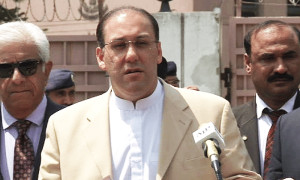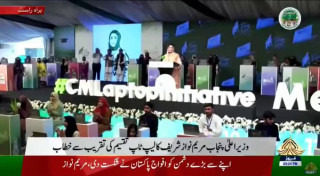RiazHaq
Senator (1k+ posts)
The World Bank sees Pakistan's GDP to grow 5.5% in current fiscal year 2017-18 ending in June 2018, a full percentage point faster than the 4.5% average GDP growth for Emerging and Developing Economies (EMDEs) that include Argentina, Brazil, China, India, Nigeria and Russia among others. However, Pakistan economic growth continues to lag growth forecast for regional economies of India and Bangladesh. The report also highlights the issue to growing trade deficit and current account gap that could lead to yet another balance of payments crisis for Pakistan requiring another IMF bailout.
[TABLE="class: tr-caption-container, align: center"]
[TR]
[TD]

[/TR]
[TR]
[TD="class: tr-caption"]Source: World Bank Group[/TD]
[/TR]
[/TABLE]
Pakistan GDP Growth:
Here's an excerpt of the January 2018 World Bank report titled "Global Economic Prospects" as it relates to Pakistan:
"In Pakistan, growth continued to accelerate in FY2016/17 (July-June) to 5.3 percent, somewhat below the government’s target of 5.7 percent as industrial sector growth was slower than expected. Activity was strong in construction and services, and there was a recovery in agricultural production with a return of normal monsoon rains. In the first half of FY2017/18, activity has continued to expand, driven by robust domestic demand supported by strong credit growth and investment projects related to the China-Pakistan Economic Corridor. Meanwhile, the current account deficit widened to 4.1 percent of GDP compared to 1.7 percent last year, amid weak exports and buoyant imports."
Growing External Account Imbalance:
The report correctly points out the problem of growing current account deficit that could turn into a balance of payments crisis unless the trade deficits are brought under control. Recent trends in the last three months do offer some hope with December 2017 exports up 15% while imports increased 10%. Exports in November increased 12.3%.
Along with double digit increase in exports in the last two months, Pakistan received remittances amounting to $1.724 billion in December 2017, 8.72% higher compared with $1.585 billion the country received in the same month of the previous year, according to data released by the State Bank of Pakistan (SBP), as reported by Express Tribune.
Summary:
Pakistan's economic growth is continuing to accelerate amid rising rising investments led by China-Pakistan Economic Corridor related infrastructure and energy related projects. The World Bank sees Pakistan's GDP to grow 5.5% in current fiscal year 2017-18 ending in June 2018, a full percentage point faster than the 4.5% average GDP growth for Emerging and Developing Economies (EMDEs) that include Argentina, Brazil, China, India, Nigeria and Russia among others. However, Pakistan economic growth continues to lag growth forecast for regional economies of India and Bangladesh. The report also calls attention to the expanding current account gap as a matter of concern that must be taken seriously by the government to avoid yet another return to the International Monetary Fund (IMF).
Source
Last edited by a moderator:








































